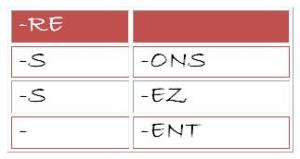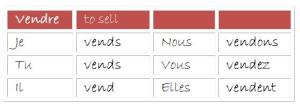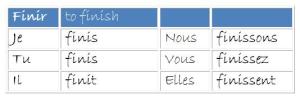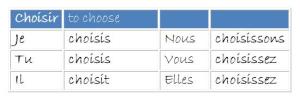Two weeks ago, we learned how to conjugate ER verbs in the present tense. Last week we learned how to conjugate IR verbs. This week it’s the last of the three main verb groups – RE verbs. RE verbs are the least common of the three regular verb groups, but they’re still important.
Our pattern:
That’s it. Pretty simple, right? The second column is exactly like the second column in our ER verb pattern. Remember?
And the first column is pretty simple too. Just remember – you drop the –re from the il/elle form and you add nothing.
So, let’s take a common example verb:
If you know how to conjugate ER, IR, and RE verbs – you know a lot of the everyday (and a lot of the not-so-everyday) verbs. See? Verb conjugation isn’t so tricky after all.





